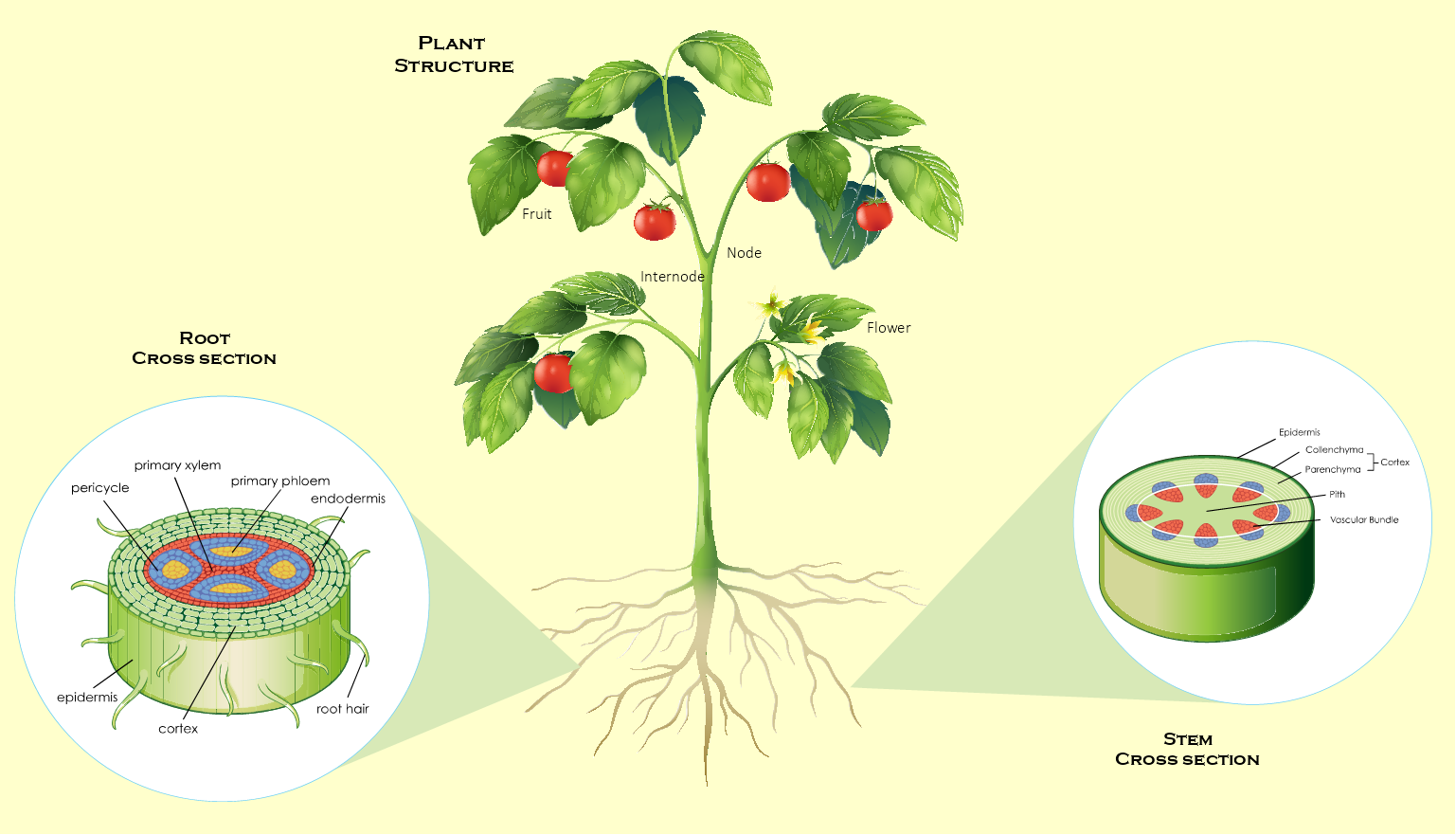
General Plant Structure
A plant has two organ systems: 1) the shoot system, and 2) the root system. The shoot system is above ground and includes the organs such as leaves, buds, stems, flowers (if the plant has any), and fruits (if the plant has any). The root system includes those parts of the plant below ground, such as the roots, tubers, and rhizomes.
What is the structure and function of plants?
The main structures or 'organs' found in plants are the leaves, stems and roots. They are made up from groups of specialized tissues that have structures suited to the jobs they perform.
Plant stems are important because they transport water and nutrients from the roots to the leaves. They also transport food energy from the leaves to the roots.
Stems function as supportive structures. They hold a plant's leaves up toward the sun so they can capture energy from sunlight.